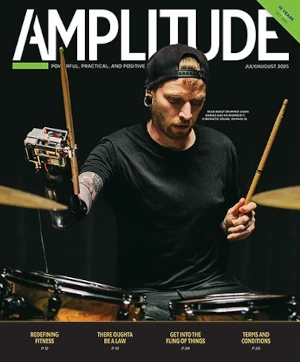By Larry Borowsky
Many US Paralympians thought they’d never see the day when their achievements got the same recognition as Olympians’ exploits. That day arrived July 30, with the opening of the U.S. Olympic and Paralympic Museum.
Located in downtown Colorado Springs, Colorado, the gorgeous new facility places Paralympic champions such as Mike Schultz and Amy Purdy atop the podium, right alongside Olympic legends such as Lindsey Vonn and Jesse Owens. It also highlights the essential role of amputees in making Team USA an international powerhouse in adaptive athletics.
“The museum means a great deal to me, not only as an athlete but also as an amputee,” says Tyler Carter, a Paralympic skier in 2014 and 2018 (and, he hopes, in 2022). “One of the Paralympic values is equality, and that is a perfect way to describe the museum.”
Read on to learn about four exhibits that help tell the story of amputees’ contributions to America’s Paralympic journey.
MIKE SCHULTZ’S MOTO KNEE AND VERSA FOOT
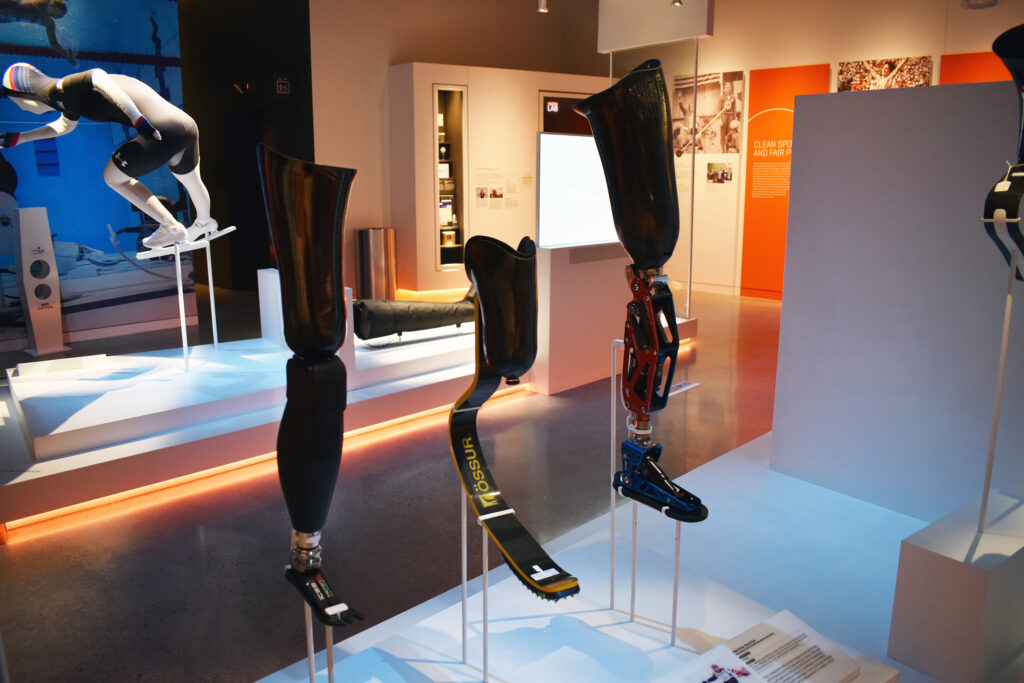
Technology has always played a key role in adaptive athletics, and this breakthrough prosthesis (at right in the photo) really brings the story to life. Schultz designed the Moto Knee and Versa Foot after losing his left leg in a snowmobiling accident, and their flexibility, tension, and spring simulate natural leg function. The technology enabled amputee athletes to push their performance to new heights, and Schultz himself became a case in point: The Moto Knee and Versa Foot propelled him to gold and silver snowboarding medals in the 2018 Paralympics.
“The whole purpose of me getting on a snowboard was for product development,” he says, “because
I wanted to make our equipment useful for different adaptive sports.” Mission accomplished. Hundreds of elite competitors now use the Moto Knee for everything from skiing and snowboarding to bicycling, water skiing, and more.
JOHN REGISTER’S ALL-AMERICAN TRACK AND FIELD SOCKET
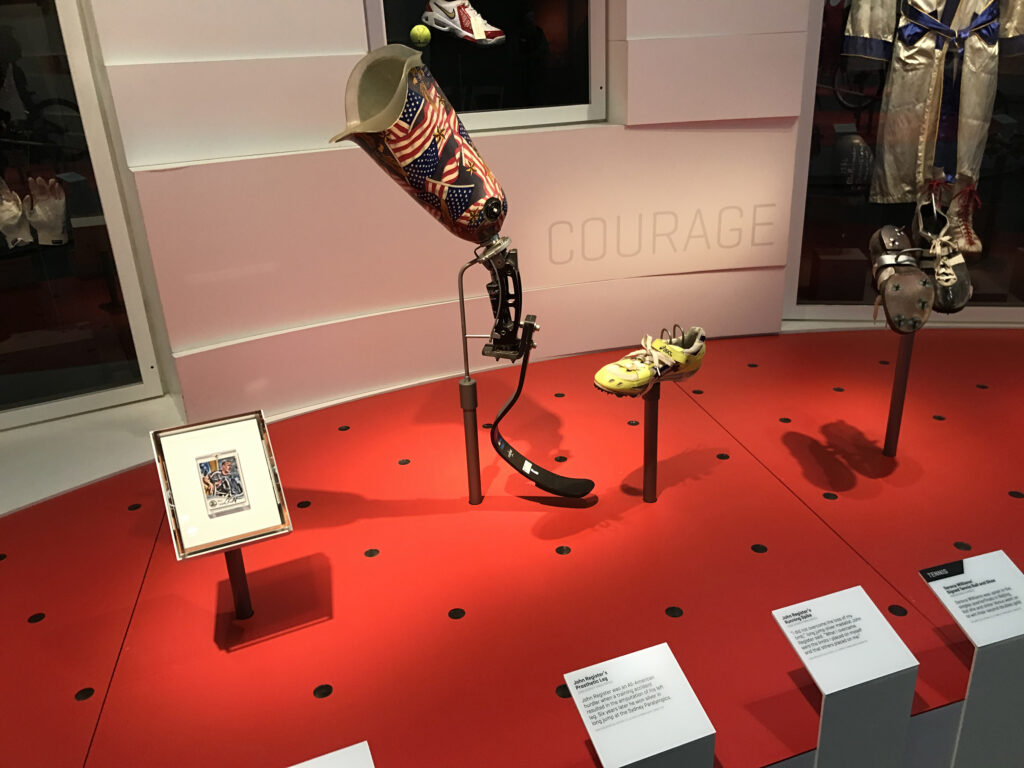
Team USA owes much of its Paralympic glory to military veterans who lost limbs in combat. Register represented his country in both a military and athletic uniform, but he took a slightly unusual path. He returned home able-bodied after serving in Operation Desert Shield, only to lose his left leg to an athletic injury after the war.
When he eventually won a silver medal in the long jump for Team USA, Register wore a prosthesis that lavishly displayed the national pride and patriotism shared by nearly all soldiers turned Paralympians. He also articulated the determination shared by amputee athletes of every background, military or civilian. “I did not overcome the loss of my limb,” Register said at the Games. “What I overcame were the limits I placed on myself and that others placed on me.”
TEAM USA’S SLED HOCKEY INTERACTIVE
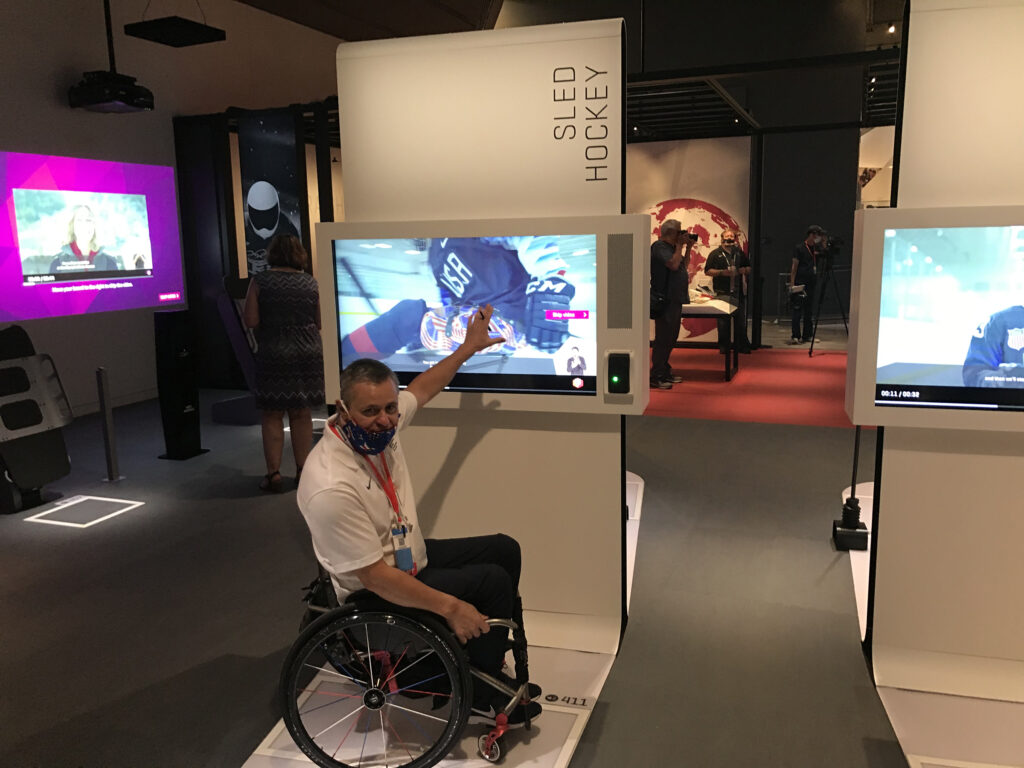
The United States has won gold medals at each of the last three Winter Paralympics, and numerous amputee players have emerged as pillars of this dynasty on ice. Goaltender Steve Cash started nearly every game and allowed a cumulative total of just three goals during the gold-medal run, while the team’s top scorers have included amputee sledders Declan Farmer (the overall tournament leader in the 2018 Games), Nikko Landeros, Alexi Salamone, and Brody Roybal.
Think you’re good enough to join them? You can “play” alongside the three-time reigning champs via one of the museum’s half-dozen high-tech interactive exhibits, using a touchscreen to skate, shoot, pass, and defend. If hockey’s not your game, you can also participate in virtual track and field events, archery, alpine skiing, and goalball.
GOLD MEDALS FROM CINDY CASTELLANO
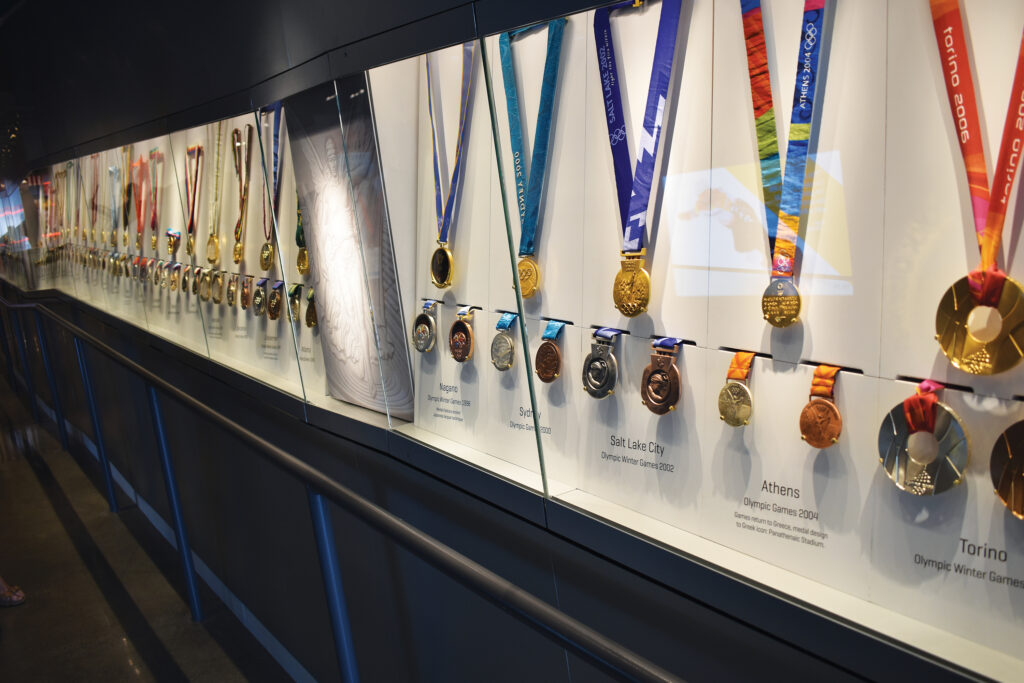
The United States sent only one athlete to the first Winter Paralympics
in 1976: Bill Hovanic, a skier who lost his right leg in the Vietnam War. Team USA won its first Winter Paralympic medals four years later, all by amputee skiers.
Castellano, an upper-limb amputee, won Team USA’s first Winter Paralympic golds, and they’re on display at the museum. In a heartfelt, handwritten poem that accompanies her medals, Castellano writes: “You took this troubled heart, released my spirit, made the joy of movement mine once more. To anyone who fears, show them also that all is possible….to all the skiers, all my friends, belong these golden rewards.”
Her words beautifully capture the essence of the Paralympics: the joy of movement, the triumph of spirit, and the embrace of endless possibility.
TOP IMAGE: Image by Jason O’Rear. Courtesy of Diller Scofidio + Renfro.


